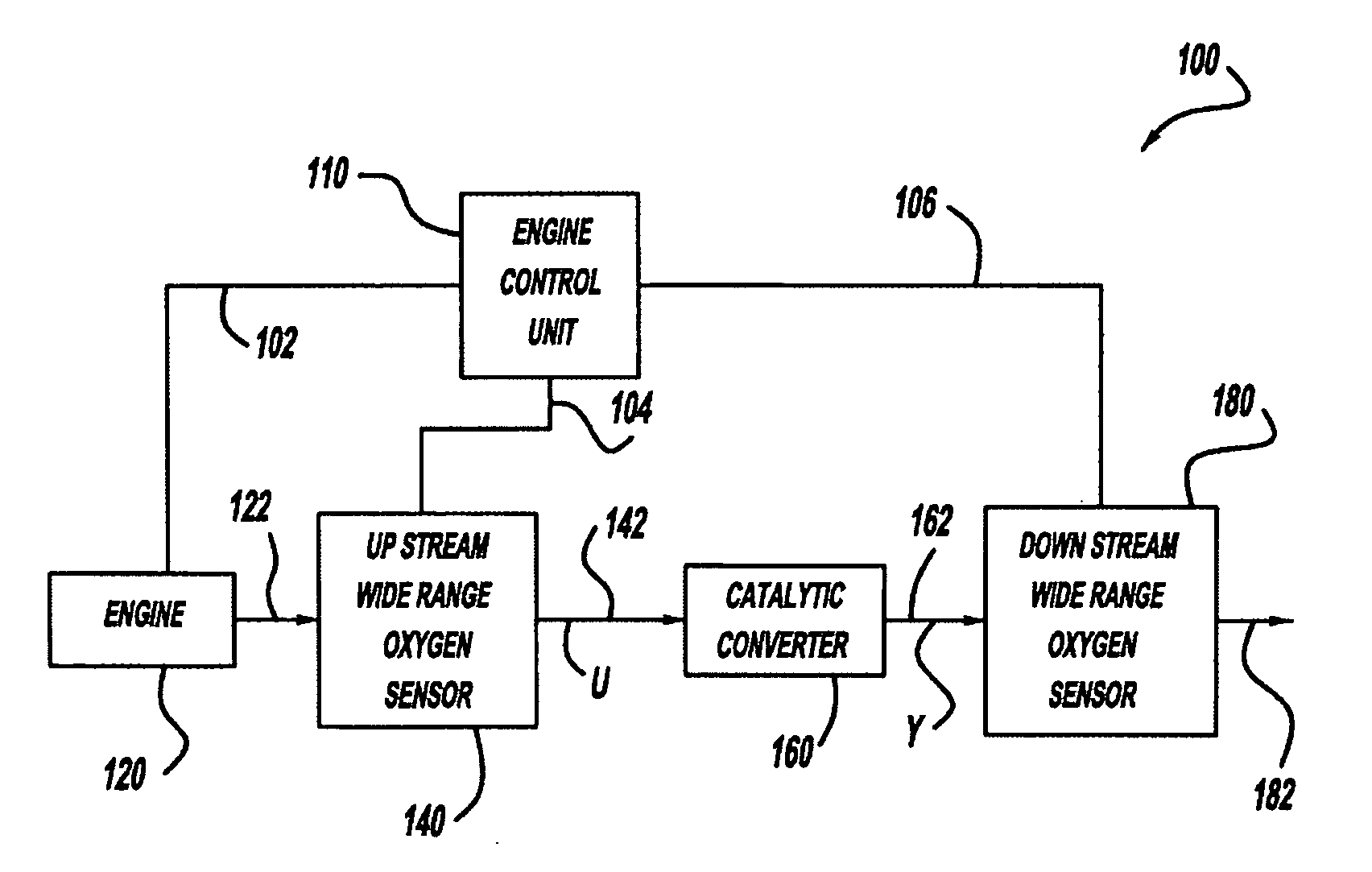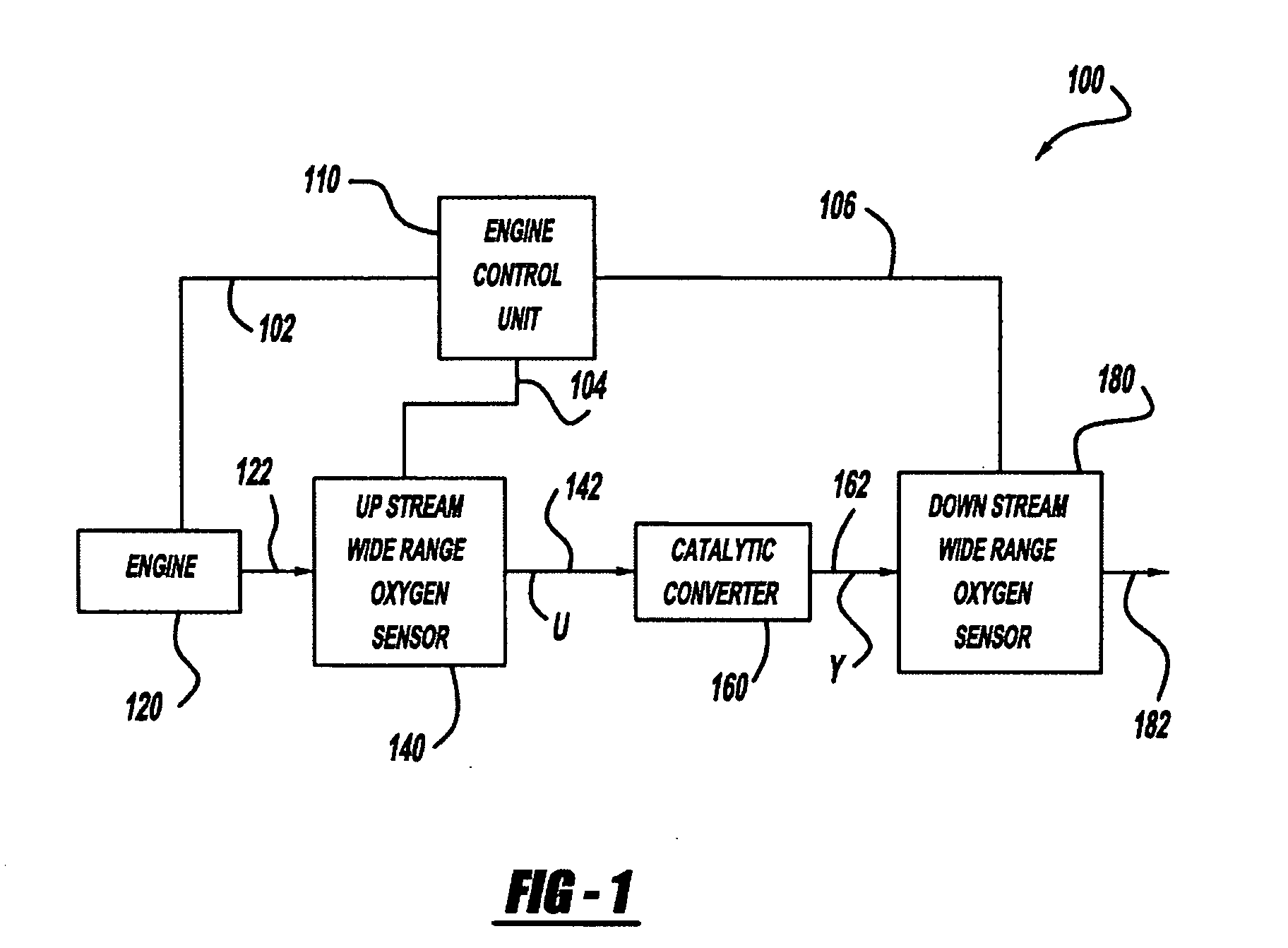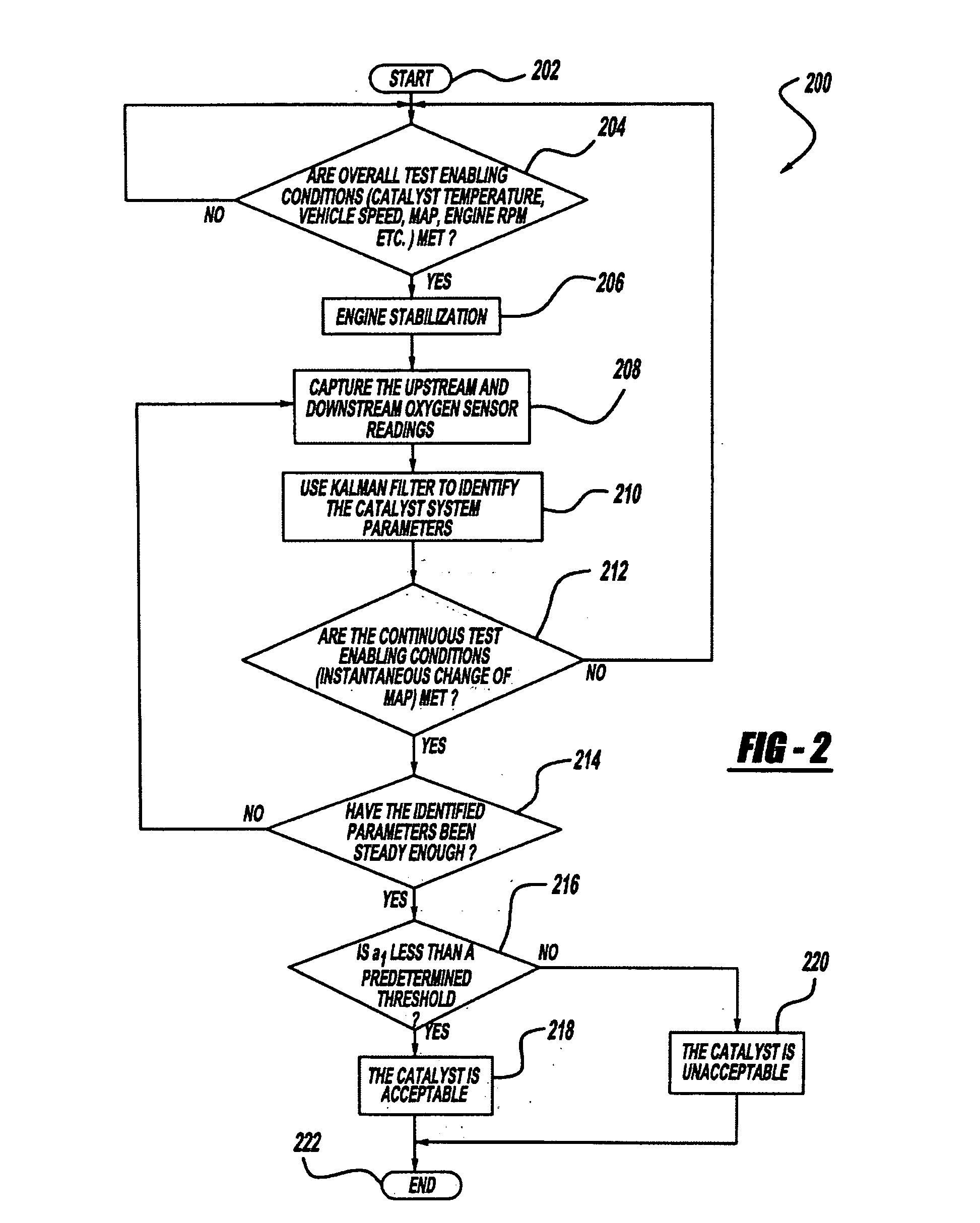On-line catalyst monitoring using a kalman filter
a technology of kalman filter and catalyst, applied in the direction of electrical control, process and machine control, instruments, etc., can solve the problems of significantly changing the time history of exhaust gas temperature and flow rate, high cost and less stability of current available hc and nosub>x /sub>sensors, and prone to noise sources
- Summary
- Abstract
- Description
- Claims
- Application Information
AI Technical Summary
Problems solved by technology
Method used
Image
Examples
Embodiment Construction
[0013]FIG. 1 illustrates an exhaust catalyst monitoring arrangement 100 having an engine control unit (ECU) 110, a motor vehicle engine 120, a catalytic converter 160 having a catalyst to be diagnosed, an upstream wide range oxygen sensor 140 and a downstream wide range oxygen sensor 180. Upstream oxygen sensor 140 monitors the level of oxygen in exhaust gases produced by motor vehicle engine 120 and present at input 142 of catalytic converter 160. Downstream wide range oxygen sensor 180 monitors the level of oxygen in the exhaust gases flowing from an output 162 of catalytic converter 160. ECU 110 controls engine 120 to operate about a stoichiometric fuel / air ratio operating point using buses 102, 104 and 106, and ECU 110 executes a non-intrusive, stored program method for detecting an unacceptably aged catalyst as described herein.
[0014] Looking from a system point of view, a catalytic converter may be treated as a nonlinear plant in which chemical reactions, thermotransferring a...
PUM
 Login to View More
Login to View More Abstract
Description
Claims
Application Information
 Login to View More
Login to View More - R&D
- Intellectual Property
- Life Sciences
- Materials
- Tech Scout
- Unparalleled Data Quality
- Higher Quality Content
- 60% Fewer Hallucinations
Browse by: Latest US Patents, China's latest patents, Technical Efficacy Thesaurus, Application Domain, Technology Topic, Popular Technical Reports.
© 2025 PatSnap. All rights reserved.Legal|Privacy policy|Modern Slavery Act Transparency Statement|Sitemap|About US| Contact US: help@patsnap.com



